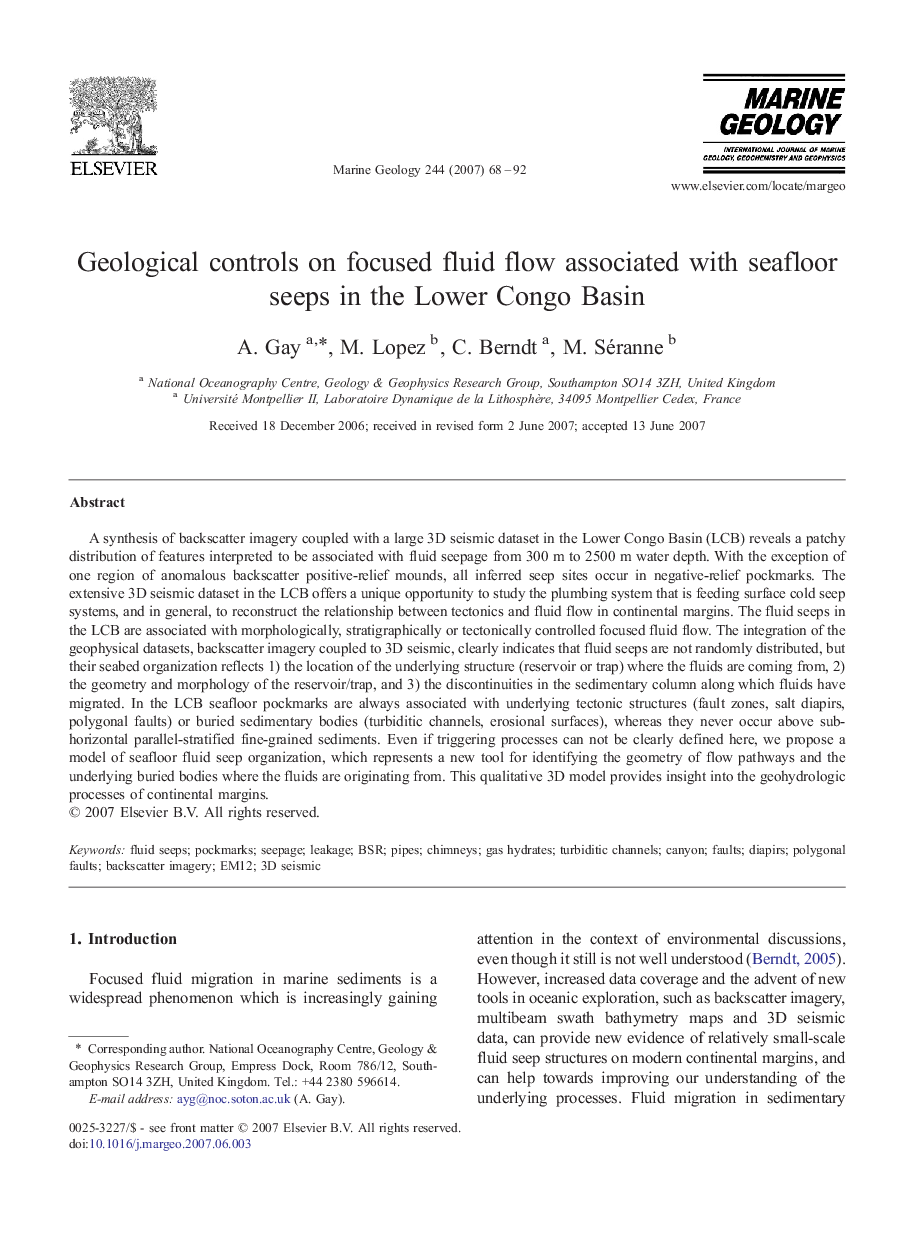| Article ID | Journal | Published Year | Pages | File Type |
|---|---|---|---|---|
| 4719469 | Marine Geology | 2007 | 25 Pages |
A synthesis of backscatter imagery coupled with a large 3D seismic dataset in the Lower Congo Basin (LCB) reveals a patchy distribution of features interpreted to be associated with fluid seepage from 300 m to 2500 m water depth. With the exception of one region of anomalous backscatter positive-relief mounds, all inferred seep sites occur in negative-relief pockmarks. The extensive 3D seismic dataset in the LCB offers a unique opportunity to study the plumbing system that is feeding surface cold seep systems, and in general, to reconstruct the relationship between tectonics and fluid flow in continental margins. The fluid seeps in the LCB are associated with morphologically, stratigraphically or tectonically controlled focused fluid flow. The integration of the geophysical datasets, backscatter imagery coupled to 3D seismic, clearly indicates that fluid seeps are not randomly distributed, but their seabed organization reflects 1) the location of the underlying structure (reservoir or trap) where the fluids are coming from, 2) the geometry and morphology of the reservoir/trap, and 3) the discontinuities in the sedimentary column along which fluids have migrated. In the LCB seafloor pockmarks are always associated with underlying tectonic structures (fault zones, salt diapirs, polygonal faults) or buried sedimentary bodies (turbiditic channels, erosional surfaces), whereas they never occur above sub-horizontal parallel-stratified fine-grained sediments. Even if triggering processes can not be clearly defined here, we propose a model of seafloor fluid seep organization, which represents a new tool for identifying the geometry of flow pathways and the underlying buried bodies where the fluids are originating from. This qualitative 3D model provides insight into the geohydrologic processes of continental margins.
